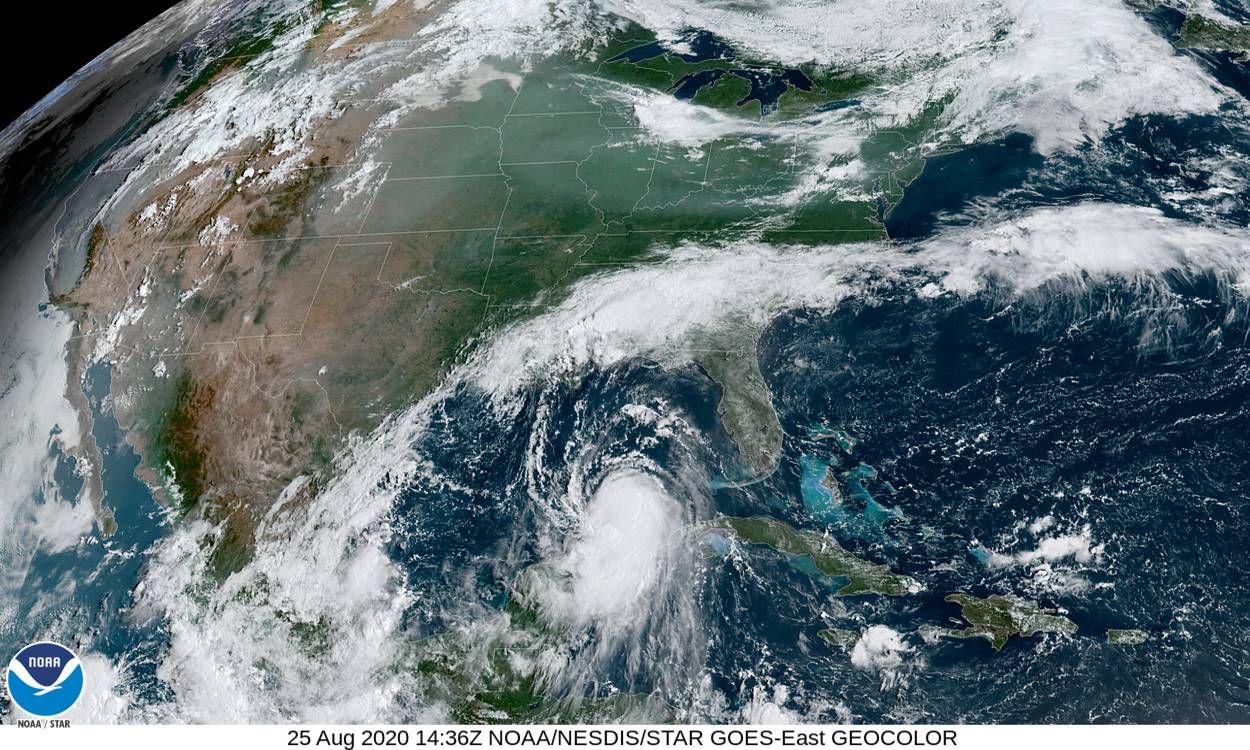Texas A&M Storm Expert Says Texas At Peak Of Hurricane Season
Some experts believe storms are forming later in the season as the Earth continues to get hotter.
Aug 26, 2020

Satellite image of Hurricane Laura strengthening over the Gulf of Mexico, courtesy of NOAA.
Two storms at once in the Gulf of Mexico is a rare event and presents unique problems, says a Texas A&M University storm expert.
Robert Korty, associate professor in atmospheric sciences, said that Tropical Storm Marco and Hurricane Laura arriving within days of each in the gulf has not happened since Sept. 5, 1933, when a hurricane hit Brownsville, Texas and another hit Florida, both making landfall around midnight.
“Two storms in the same week divide attention and resources in responding to them,” Korty said. “And if the storms affect the same part of the coast, the threat from flooding is exacerbated. Marco has weakened, but Laura is now a hurricane.”
While two storms at the same time is rare, their formation this time of year is not.
Hurricane season peaks between August and October, but there may be growing evidence that the storm season is lengthening.
“Hurricane activity in the Atlantic basin crests from mid-August to mid-October, so we have entered the heart of the hurricane season,” Korty said. “Although the season formally runs from June 1 to Nov. 30, August, September and October are by far the most active in the Atlantic.”
Some experts believe that as climate change has warmed the Earth considerably in the past 100 years, more storms tend to form later in the season, especially since water temperatures remain warmer in the fall months.
“As the planet has warmed, the length of the season may stretch a bit longer – both starting earlier and ending later,” Korty said. “The early and late season storms are less likely to be intense, as conditions that support their existence are often marginal.”
Hurricanes Gordon (1914), Kate (1985) and Noel (2007) formed in November, while unnamed storms formed in the same month in 1912 and 1932, and another in December in 1925.
“This year we had an early start, with 13 named storms already. Several of them were short lived and weak, but that is a record-breaking launch into the heart of the season,” Korty said.
Texas’ situation may be a bit different, Korty said.
“Texas is usually most vulnerable during the first half of the season – from June to September,” he said. “By later in the autumn, upper level winds are more likely to be out of the west, which tends to steer any tropical storms east of us.”
By Keith Randall, Texas A&M University Division of Marketing & Communications

